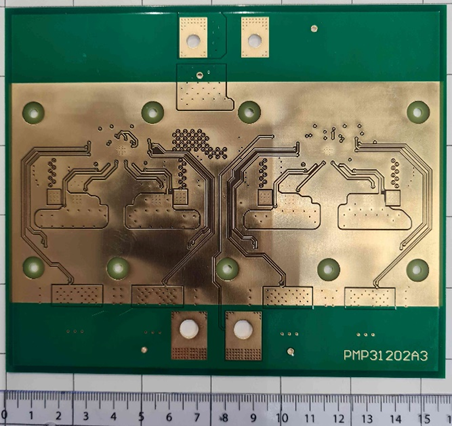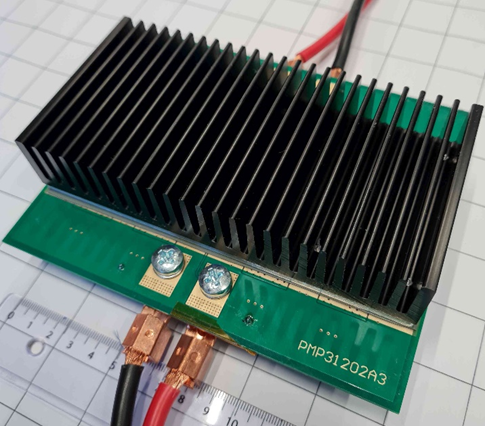TIDT315 December 2022
- Description
- Features
- Applications
- 1Test Prerequisites
- 2Testing and Results
- 3Waveforms
- A Individual Adjusting of the Rising Edge and Falling Edge With LM5143A
- B Thermal Behavior, Prototype in Vertical Position
- C ON Demand – Assembly of Thermal Interface
2.3.4.2 Description – Mechanical Setup Needs a Workshop
The following list applies to a four layer board, single-side assembly to enable a heat sink;
- The thermal foil was mounted to the bare PCB, using a cost-effective RSpro #707-5657 (H48-6 material), 3.2 W/mK, Iso 700 V/mm
- 150 mm × 150 mm × 1 mm = fits for two prototypes, adhesive on both sides
- Drill the aluminum adapter 150 mm × 75 mm × 5 mm accordingly to the PCB, 3.5-mm diameter holes
- Drill heat sink, SK 58 75 SA 150 mm × 75 mm accordingly to the PCB, with 2.5-mm diameter holes and cut thread to M3
- For EMI measurements, connect the screw in between ph1 or ph4 via ring eyelet to output ground J5

|

|
|
Bare PCB 150 mm × 125 mm - bottom side No solder resist at heat sink area Place thermal foil here |
Standard heat sink 150 mm × 75 mm added to PCB On top of aluminum adapter 150 mm × 75 mm × 5 mm (The heat sink acts thermally like a metal case.) |
For a more detailed description, see Appendix C.